One of our favourite mathematical designs is something we call From Square To Eternity. It will be very familiar to mathematicians and quilters.
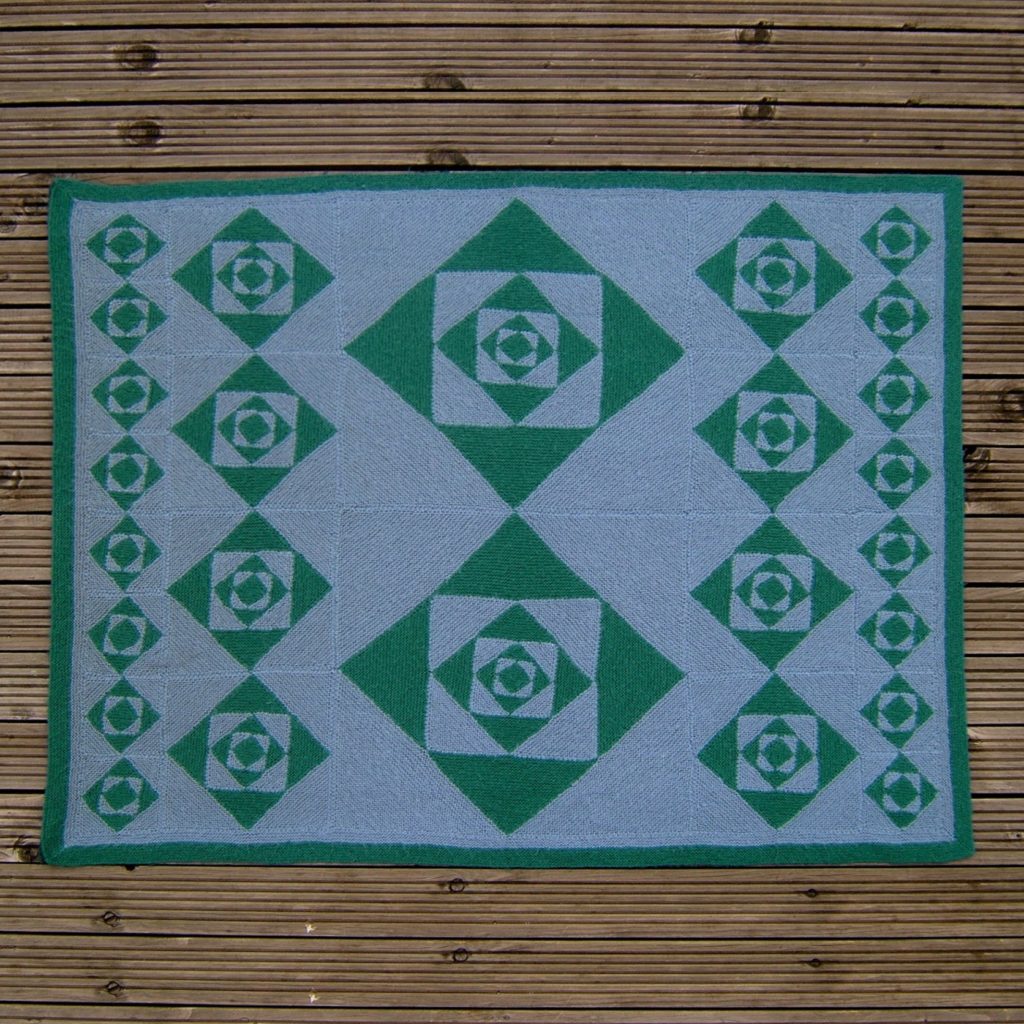
The four triangles that make up the new square have the same area as everything that has gone before. If you find that difficult to believe, imagine folding in the last set of triangles. They will meet in the centre and exactly cover the previous square. It all works thanks to Pythagoras’ Theorem and the magical properties of the square root of 2.
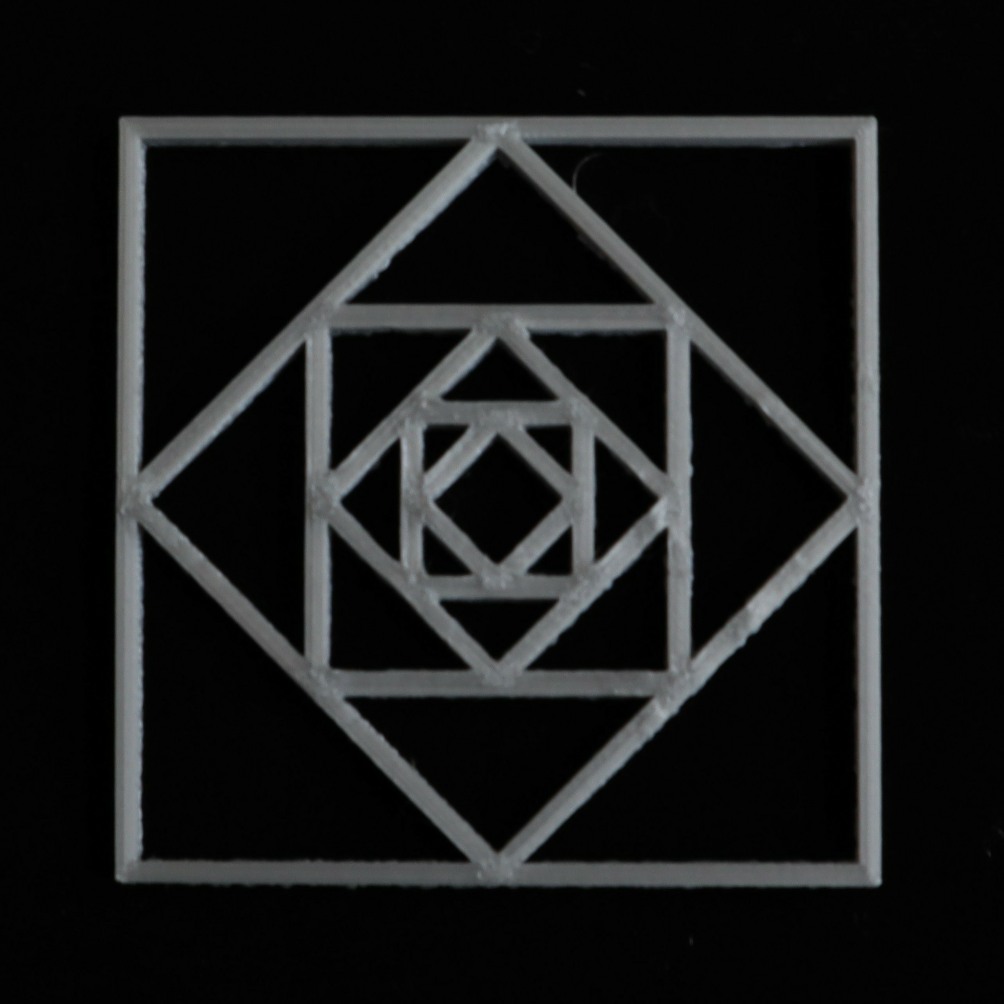
It is a square inside a square inside a square, etc., with one square standing flat and the next standing on its point. (Incidentally, we always avoid using the word diamond for a square standing on its point. It is definitely a square.) This pattern can go on for ever. It is a mathematician’s delight because each new square doubles the area of the design.
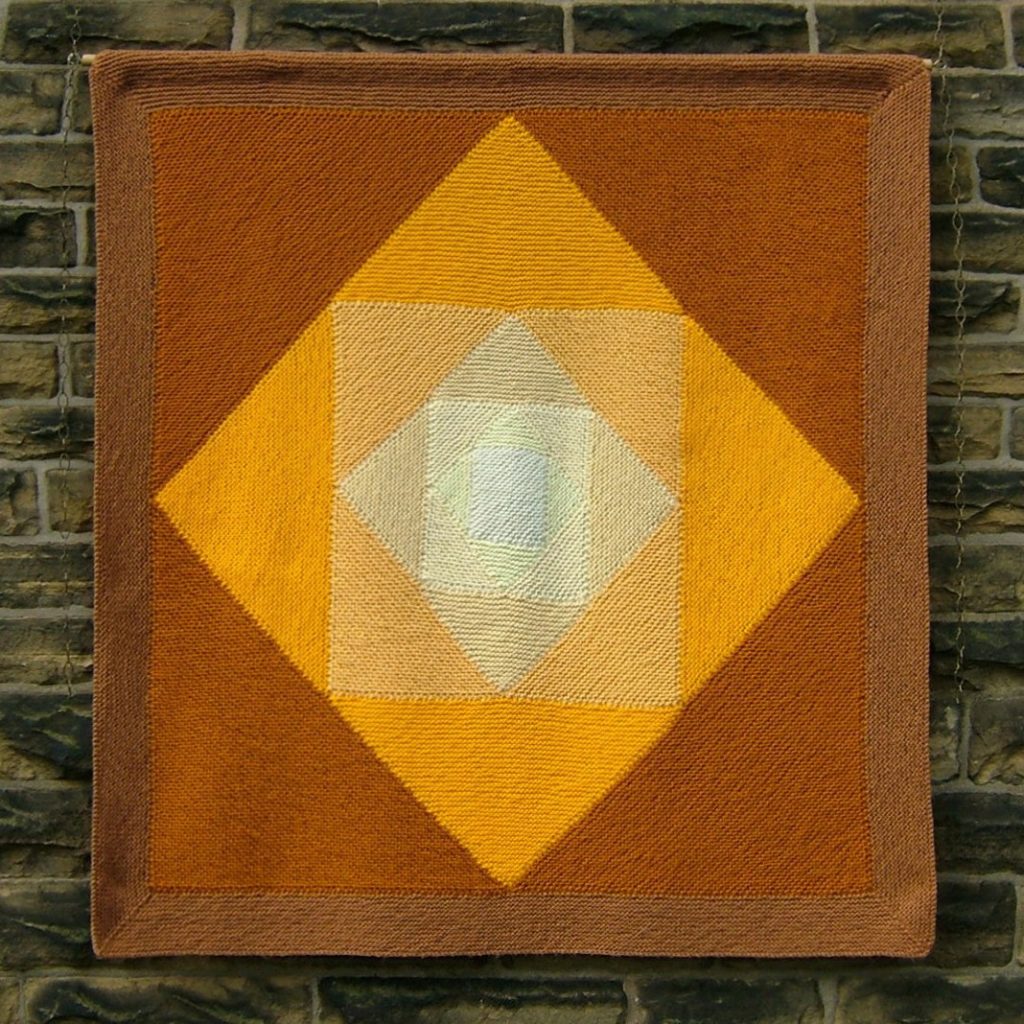
This seemed an ideal design to try 3D printing.
The first version was just the outline of the squares. It came out fairly well. The outer edge was a bit uneven but easily smoothed off. The rest is more-or-less as it came out of the printer.
I got more adventurous and tried some filled-in versions using both nozzles of the printer to use two colours.
Getting the settings right for just one colour can be quite tricky. Using two colours seems more than twice as difficult.
All filaments behave differently even when they are the same make. It takes a lot of experimentation to find what temperature is best for each. The results are affected by the temperature in the room, in the printer, on the bed of the printer, and in the nozzle that feeds the filament.
The two nozzles can be set to different temperatures but the two filaments do not always work together in the way you want them to. These squares are all experiments. They show some of the problems I encountered.
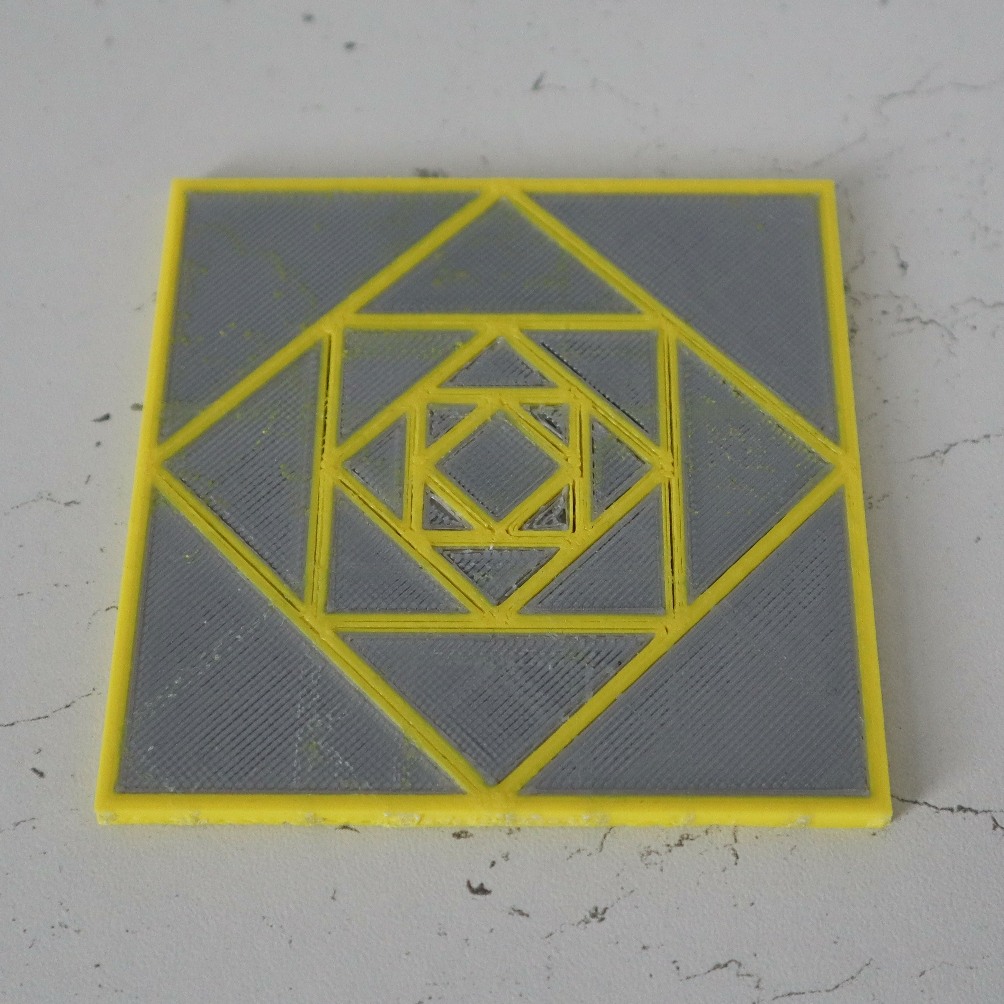
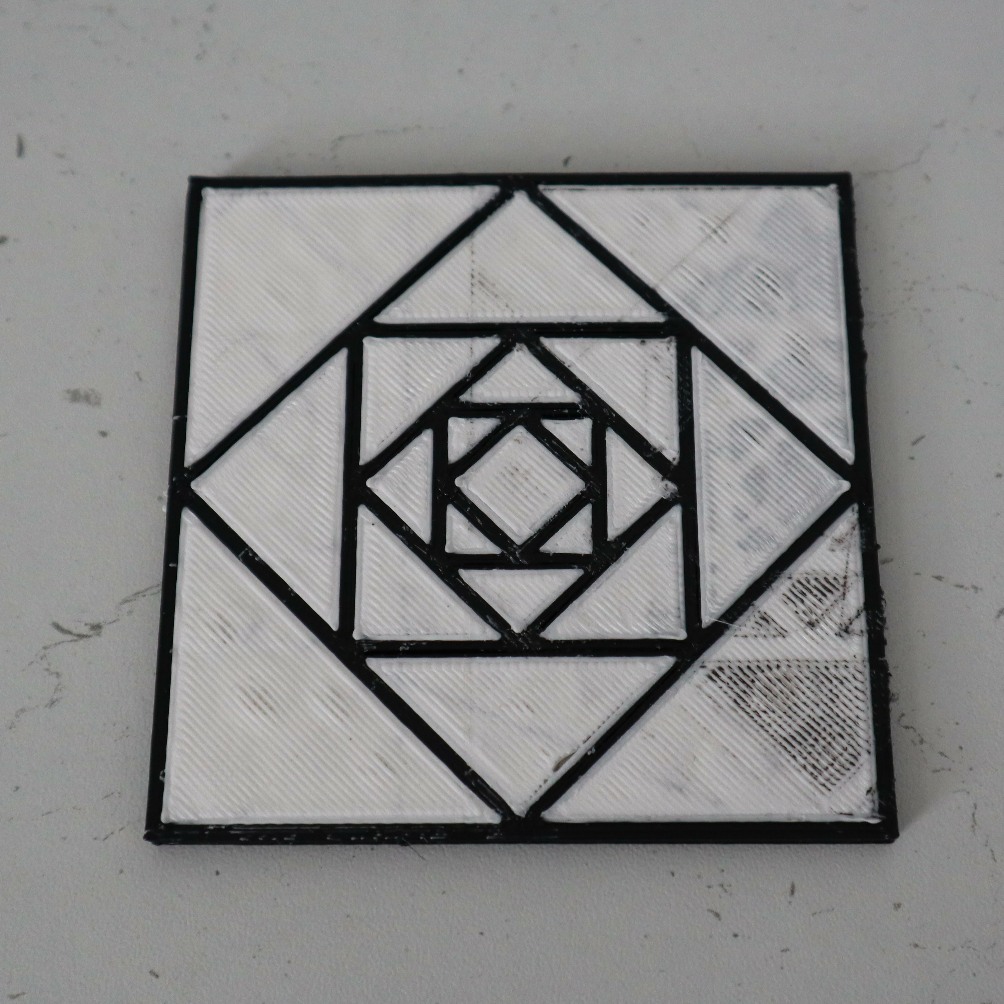
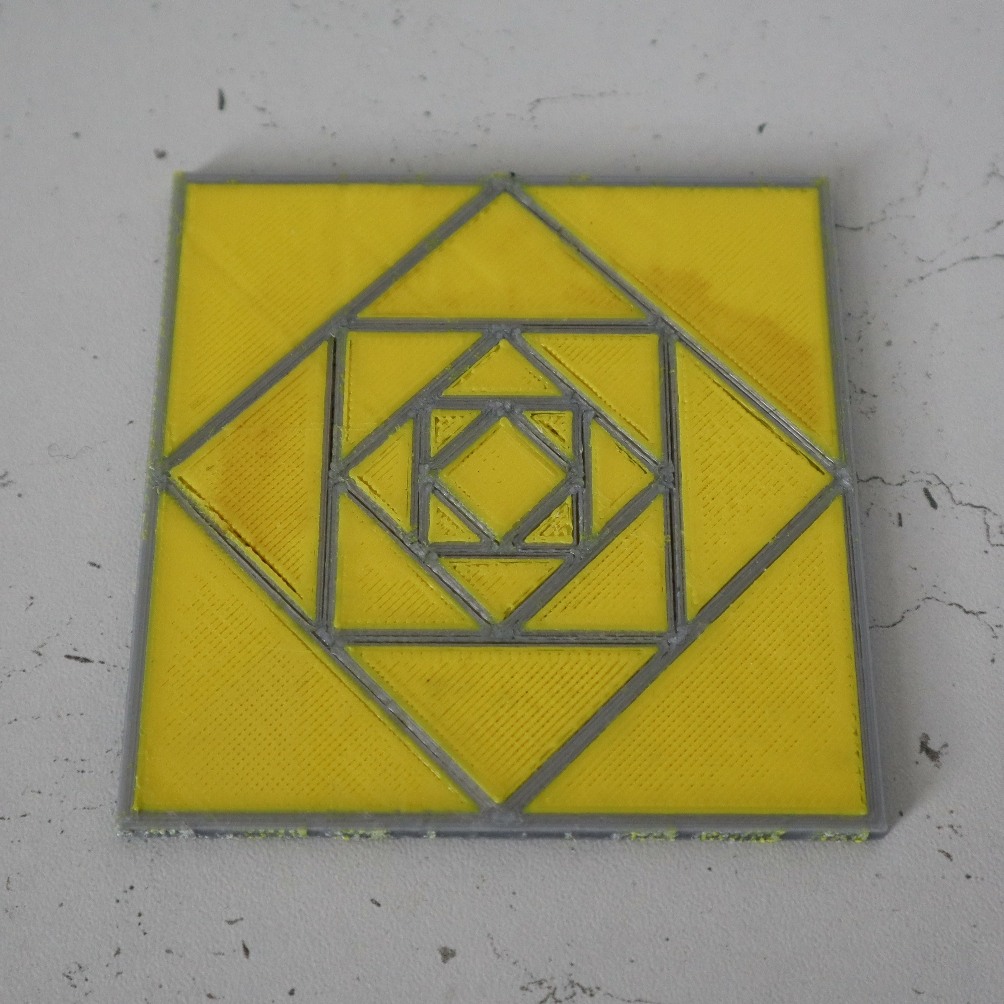
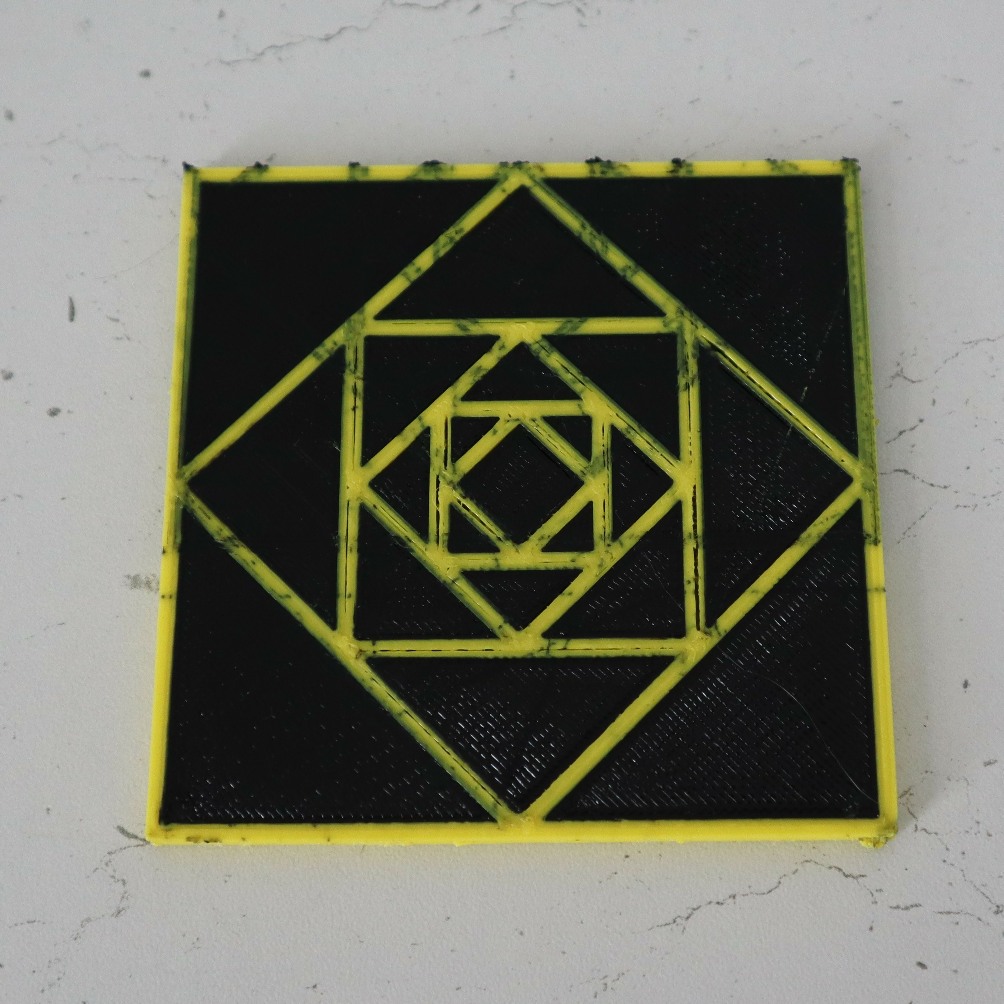
I could have gone on experimenting with this design but wanted to try something else.
I am best known for my illusion knitting designs and wanted to try some of the same methods. Most of my designs are very intricate so I decided to go back to where it all began.
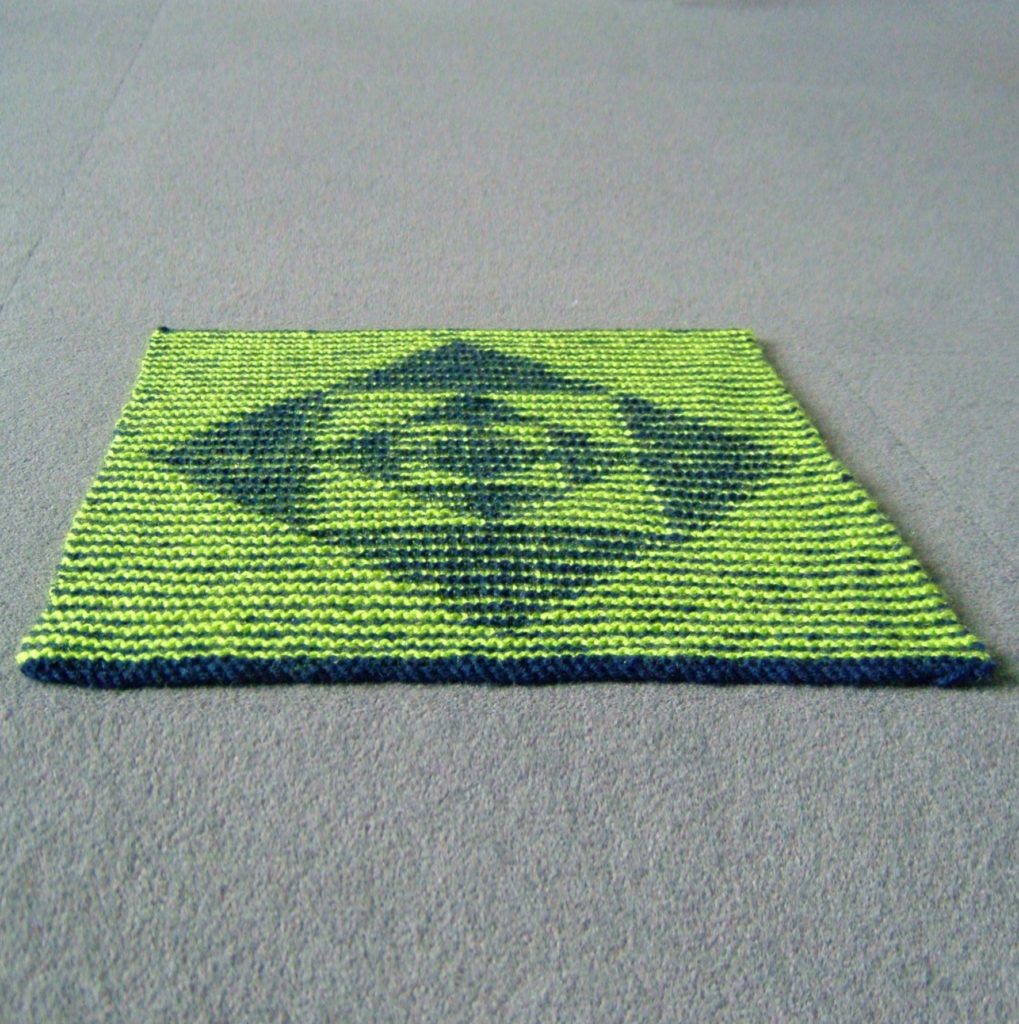
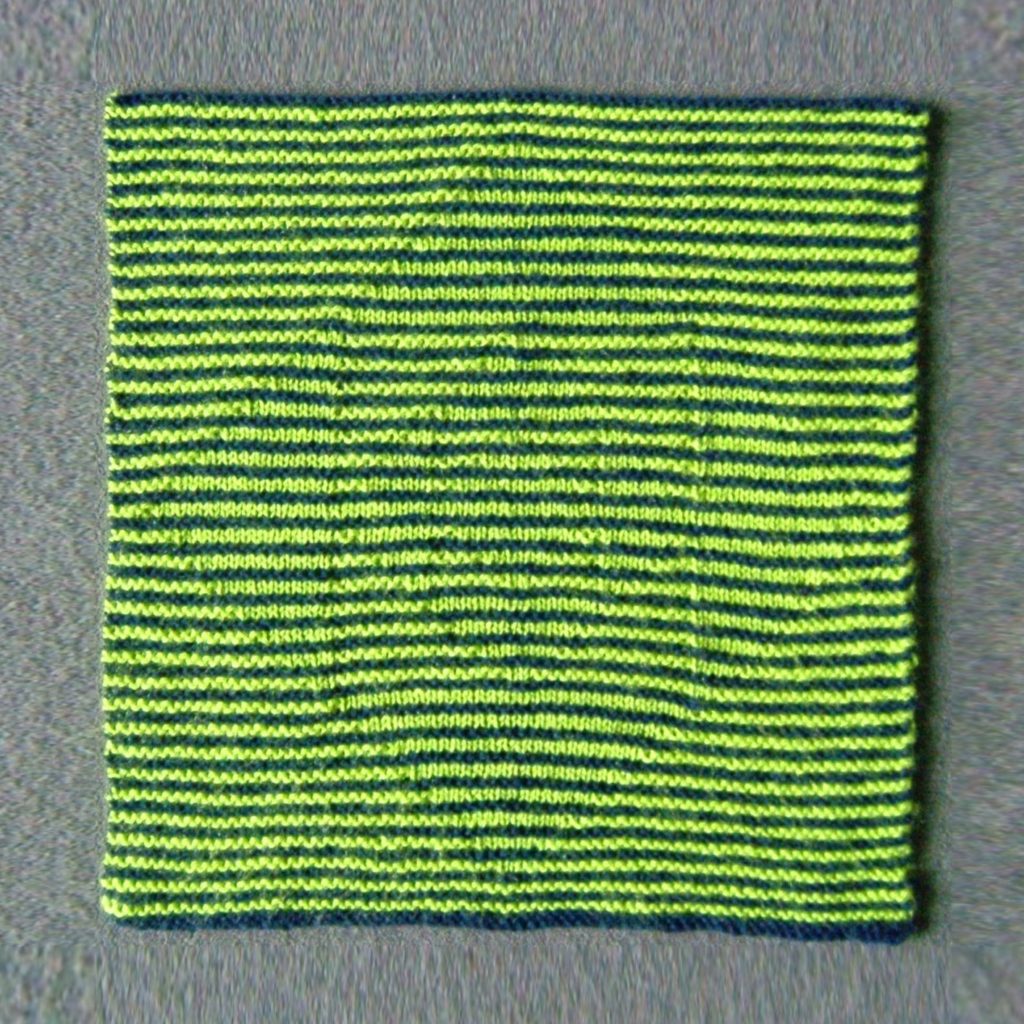
Illusion knitting works because some of the stitches stand up and others lie flat. When you view it from an angle you only see the stitches that are standing up. When you look from directly in front you see stripes. The same principles should work by 3D printing some parts that stand up and other parts that don’t.

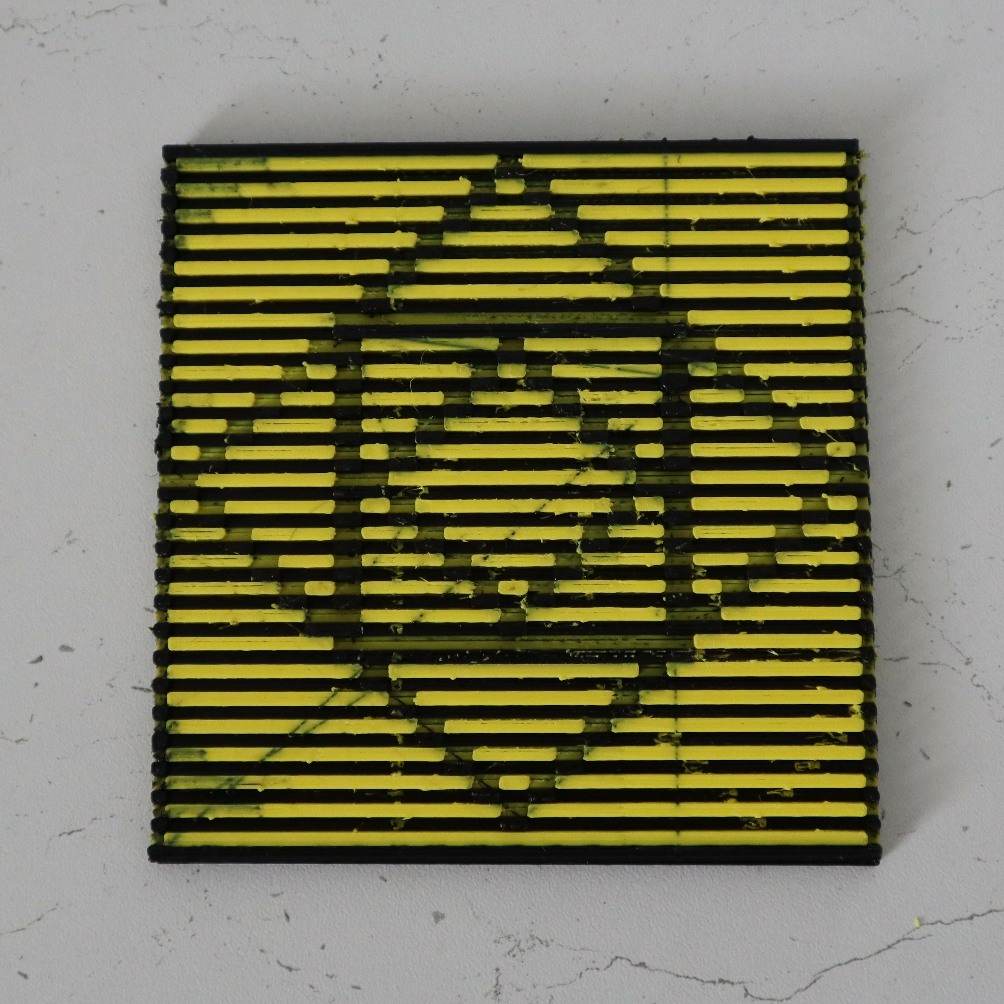
There is a long way to go to get the effect I was looking for.
Buy From Square To Eternity afghan pattern on Ravelry
Buy Square Root afghan pattern on Ravelry
Download Square To Eternity Illusion sample on Ravelry